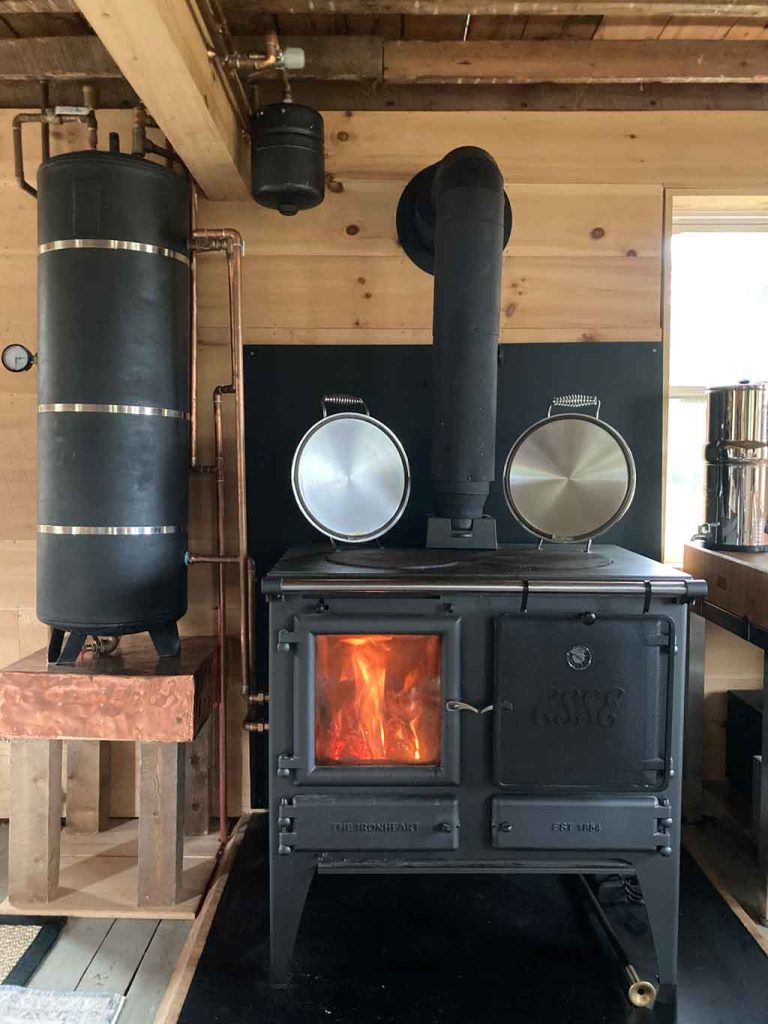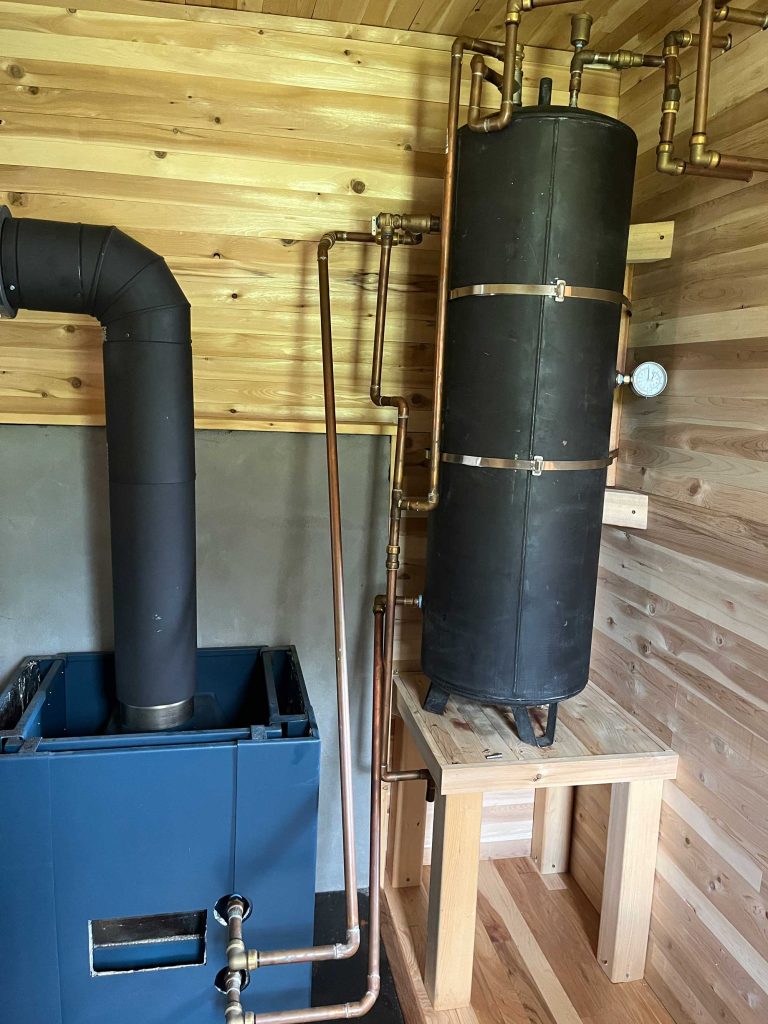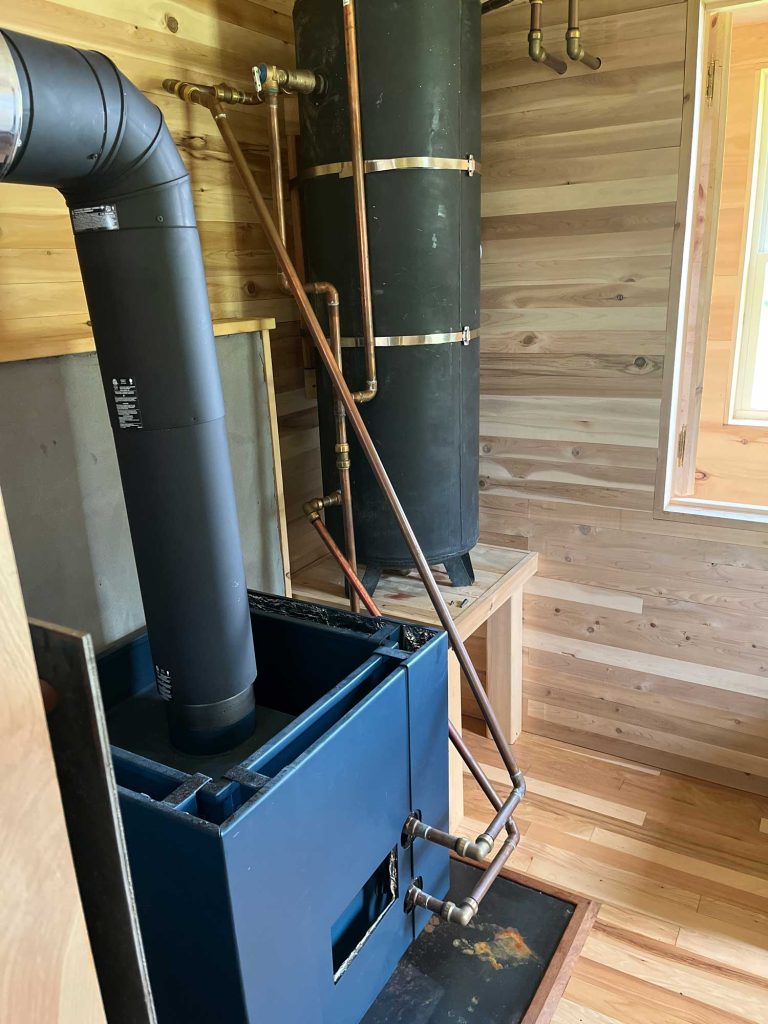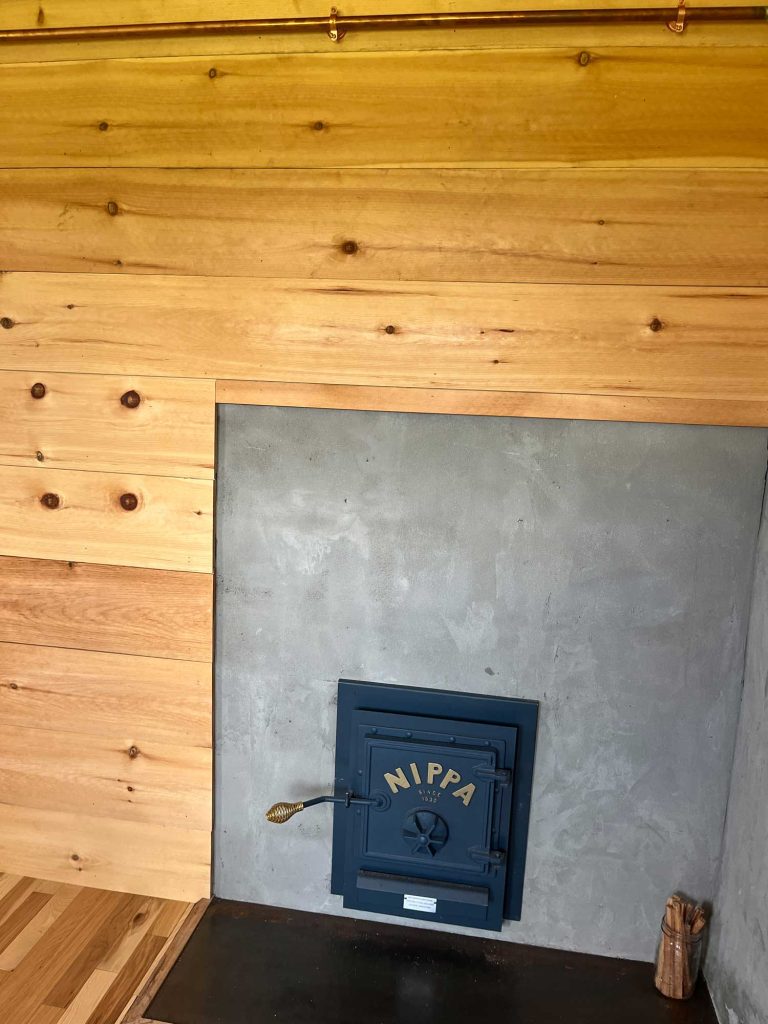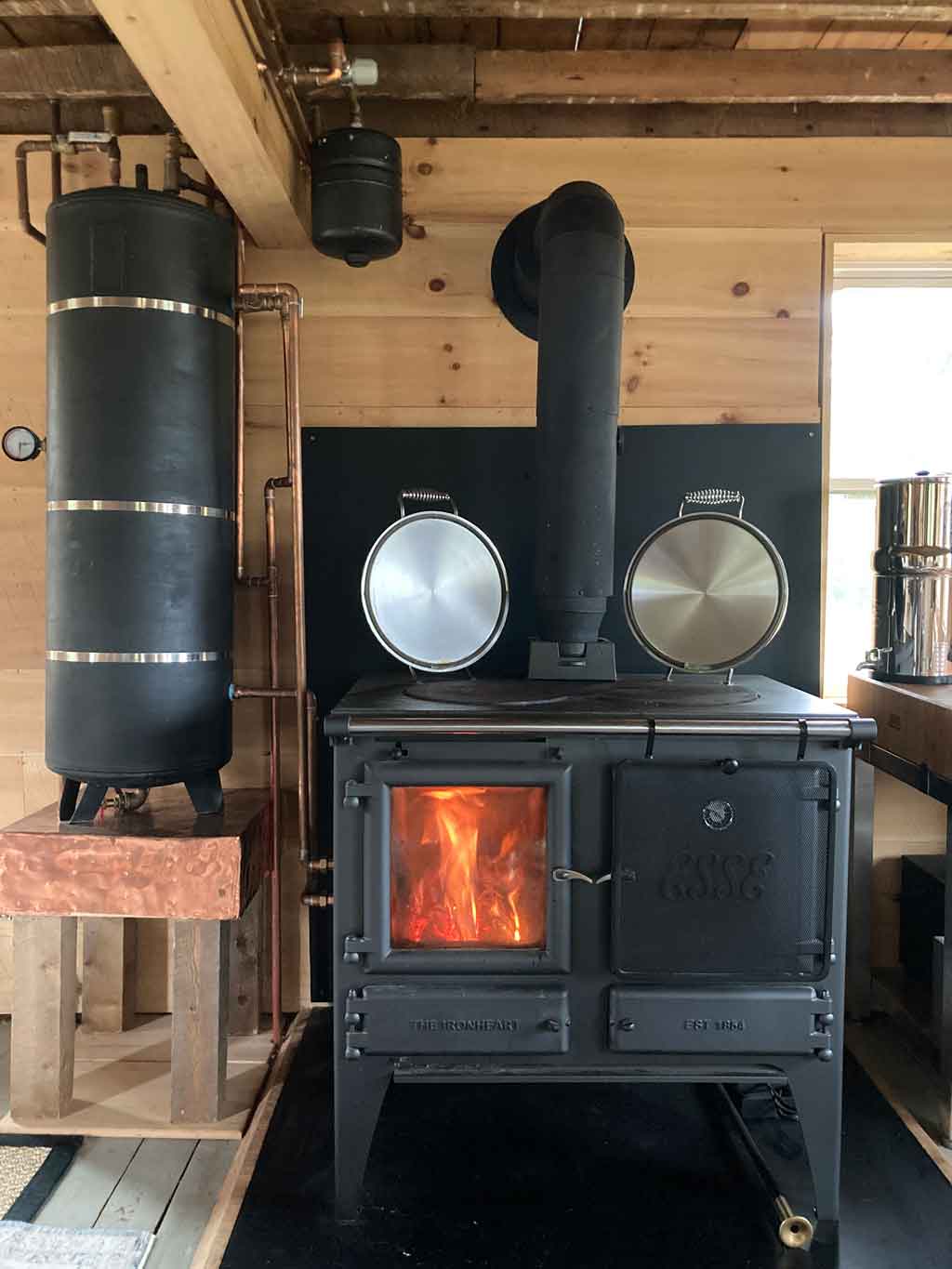Ah, the elusive thermo-siphon wood-fired hot water heating system!
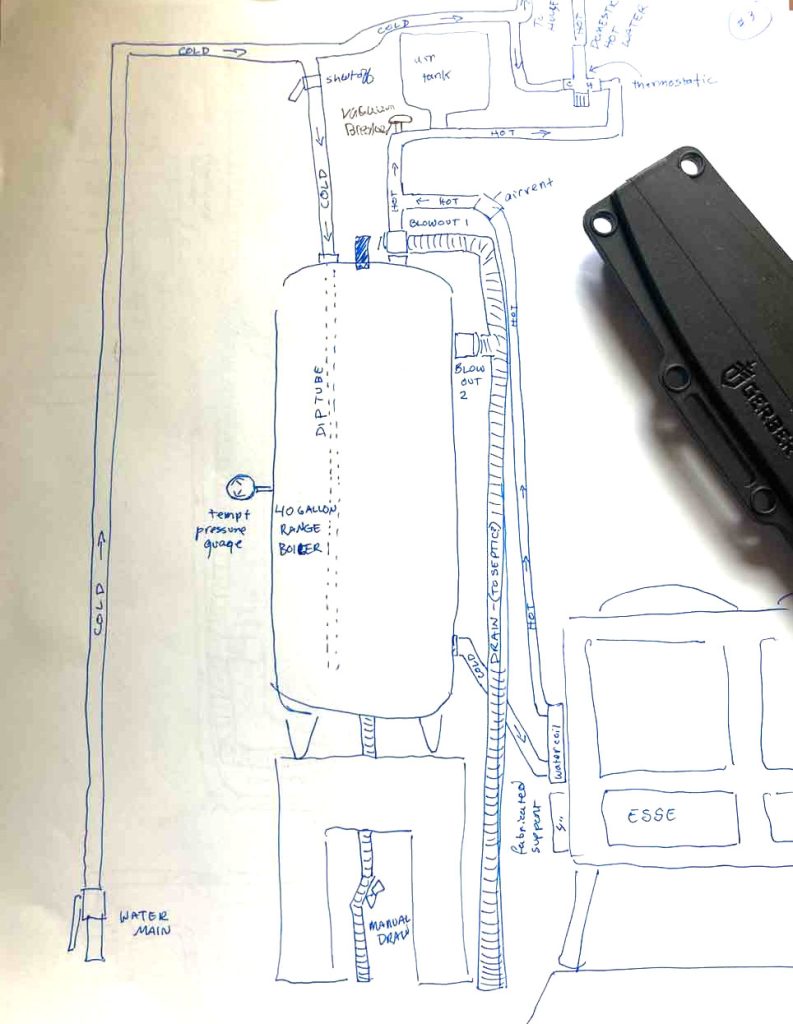
Simply, a thermosiphon is a device which siphons liquid based on a thermal change – a thermal delta.
When described in the context of off-grid systems, it may refer to a special type of hot water tank, which is installed in proximity to a wood stove. A metal pipe – the water coil – allows water from tank to flow through the wood stove, which heats the water. The hotter water rises, creating a convection effect, and pushing the colder water from the bottom of the tank into the wood stove.
The tank needs to be placed above the wood stove for this convection effect to work (aka heat rises.)
The concern with these sort of systems is that the water could get too hot inside the tank, and blow apart the system if adequate safety valves (blow-offs) have not been installed. We installed multiple blow-offs and have not had an issue yet.
We first encountered the thermosiphon idea in the book “The Self-Sufficient Backyard.” As with all systems of this type, unless you are part of an Amish supply chain, figuring out how to get a system that works right the first time is the challenge. They don’t come off the shelf.
The Schoolhouse – the experimental year-round, off-grid, no-electricity small house (and actual former schoolhouse) is where this thermo-siphon experiment is running. As the Schoolhouse is designed to use minimal or zero electricity (for philosophical, environmental, and spiritual reasons) it was an ideal place to try out this experiment.
When you talk to people in the backwoods about thermosiphons, they say stuff like “oh yeah, I had one of those.” Or “My neighbor had one for a while. It was a pain.”
Convenience is as convenience does, I suppose.
Here’s our practical experience:
- Installation number 1 (the install that didn’t work)
- We purchased a water-coil that was sold as compatible with the Esse Ironheart wood cookstove.
- We installed it with the aid of a plumber, a metal cutter, and our own labor. It did not work.
- The water coil was outside of the firebox, and the idea was there would be sufficient heat transfer to get the convection process going anyway. There was not.
- A few modifications were made, and we determined that it was not going to be a solution.
- Installation number 2 (the install that works)
- We redesigned the system with a Nippa sauna stove, including a manufacturer installed in-firebox water coil. This system works, and we did the plumbing ourselves (hello sharkbite.)
- We can get the tank to showering-hot (about 115 degrees) with 5 pieces of standard wood and 3 hours, if the fire is built right next to the water-coil, run hot, and tended.
- If I were to do this over, I would use a tank half this size for two people.
